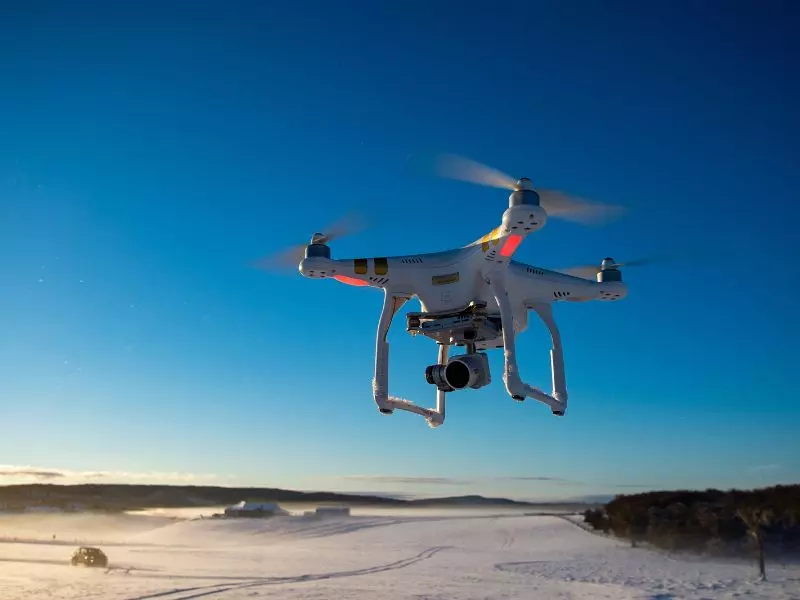Massachusetts in winter is a truly magical time. The air is crisp, the trees are barren, and the snow-covered landscape provides a stunning backdrop for photos and drone footage. With that said, drone photography in the winter comes with its own set of challenges.

The cold weather can impact both the drone and the camera, making it more difficult to get the perfect shot. But, we always make it work for our clients, and here's how.
Here are our top tips for drone photography in the winter
1. Invest in a good drone battery heater
Cold weather can have a major impact on drone batteries. In extreme cases, the battery can freeze and cause permanent damage. That's why it's important to invest in a good drone battery heater, which will help keep the battery warm and functioning properly in cold weather conditions. From experience, we can tell you there's nothing worse than watching your drone come crashing to the ground because the battery simply could not cope with the freezing temperatures.
2. Dress warmly!
As seasoned drone pilots with hundreds of flying hours under our belt, we can tell you with a fair bit of certainty that nearly all drone shoots take time. From getting that perfect shot to dealing with unexpected changes in the weather, flying conditions, and even sometimes the brief from the client, you should expect to spend a fair amount of time outdoors. While it's perfectly fine to do so in the warmer months, in winter it's something to be cognizant about. That's why on all our winter drone shoots we carry warm clothing that is functional yet insulating.
This includes items such as winter coats, hats, gloves, and even hand and feet warmers.
3. Make sure your drone is winterized
Just like your car needs to be winterized before driving in snow and ice, your drone does too! Before taking off on any winter drone photography adventures, make sure that your machine is winterized. This includes making sure that all the batteries are properly heated, as well as any other electronics on the drone that could be impacted by cold weather conditions.
4. Choose your location wisely
When it comes to winter drone photography, location is key. You'll want to find a spot that is not only picturesque but also relatively free of obstacles. When flying in winter weather conditions, it's important to have a clear line of sight so you can see your drone at all times. This is especially true when flying in snow, as the white backdrop can make it more difficult to spot a small drone.
5. Take off and land in an open area
In winter weather conditions, it's important to take off and land in an open area. This will help ensure that your drone doesn't get caught in any snow or ice, which can be detrimental to the machine.
6. Avoid flying in high winds
While winter weather conditions can provide some stunning shots, it's important to avoid flying in high winds. Not only can this be dangerous for your drone, but it can also make it more difficult to control. If you do choose to fly in winter weather conditions, make sure to stay below 10 mph wind speeds.
Conclusion
Winter drone photography can be challenging, but it's doable with the right preparation. By following these tips, you'll be well on your way to capturing some stunning winter shots!

